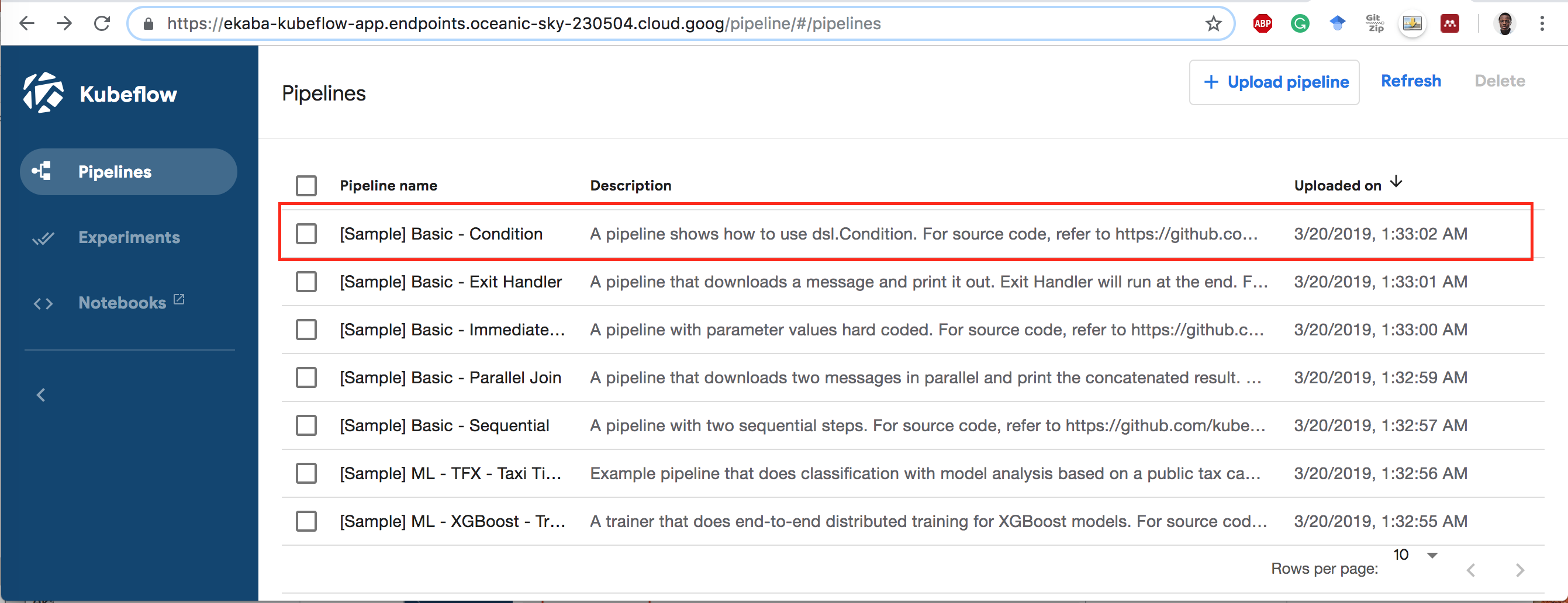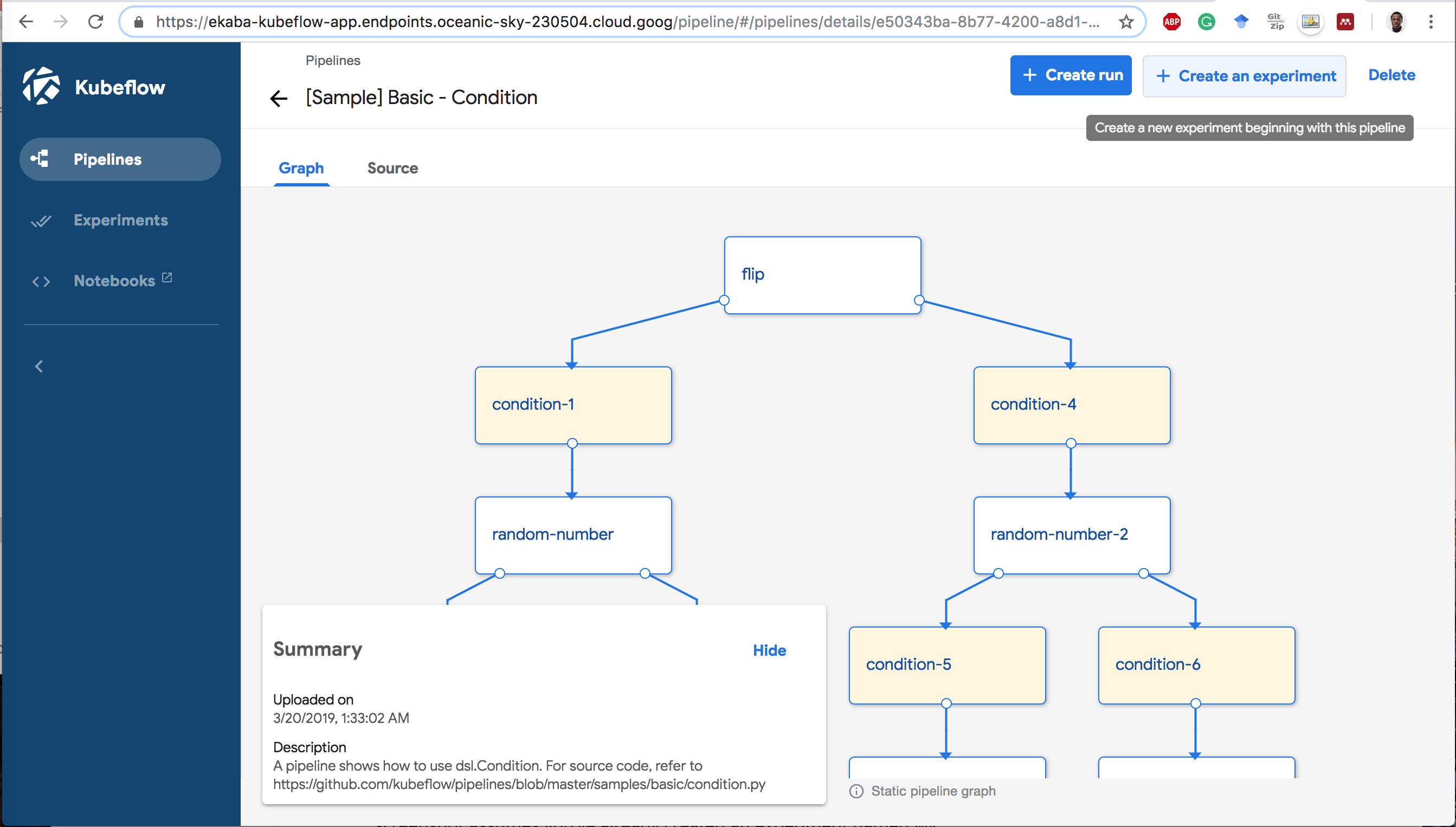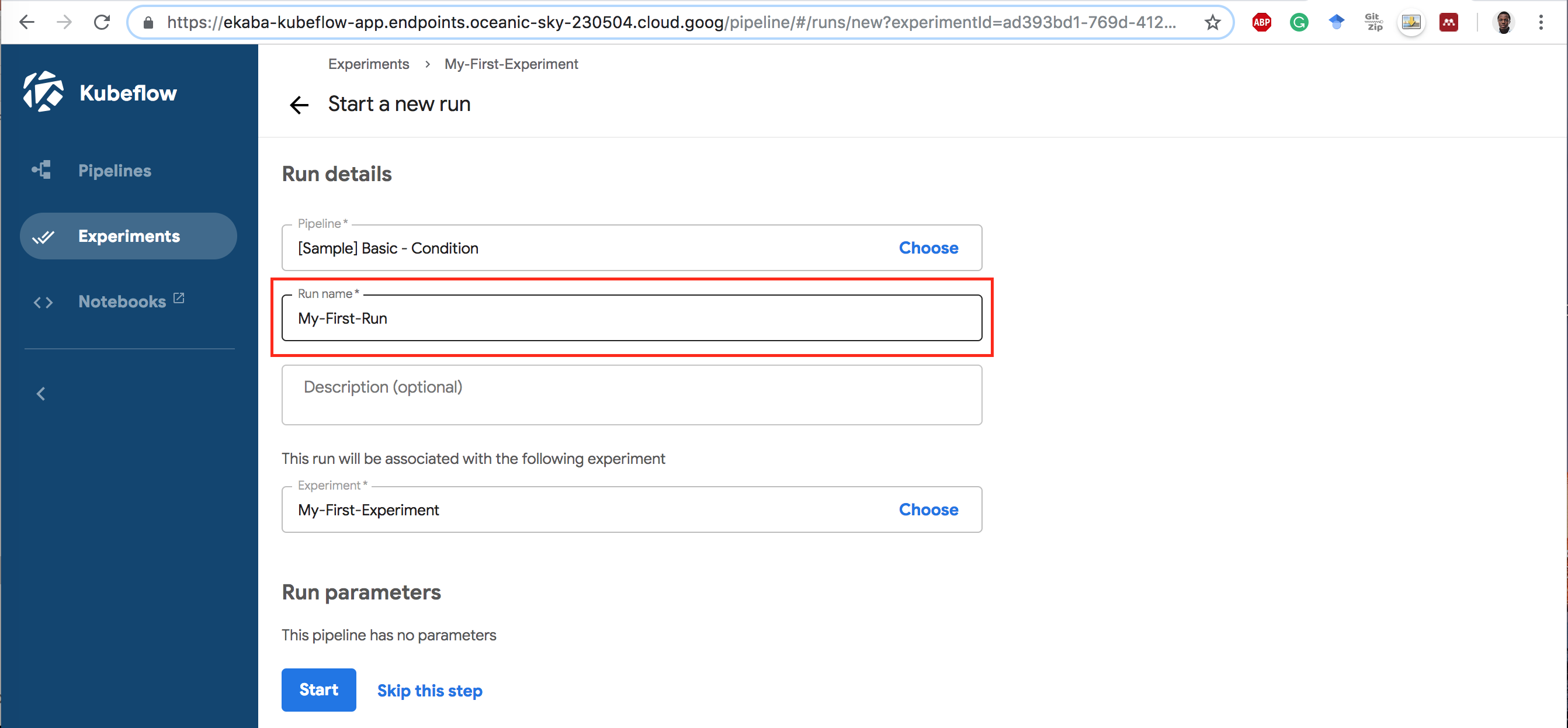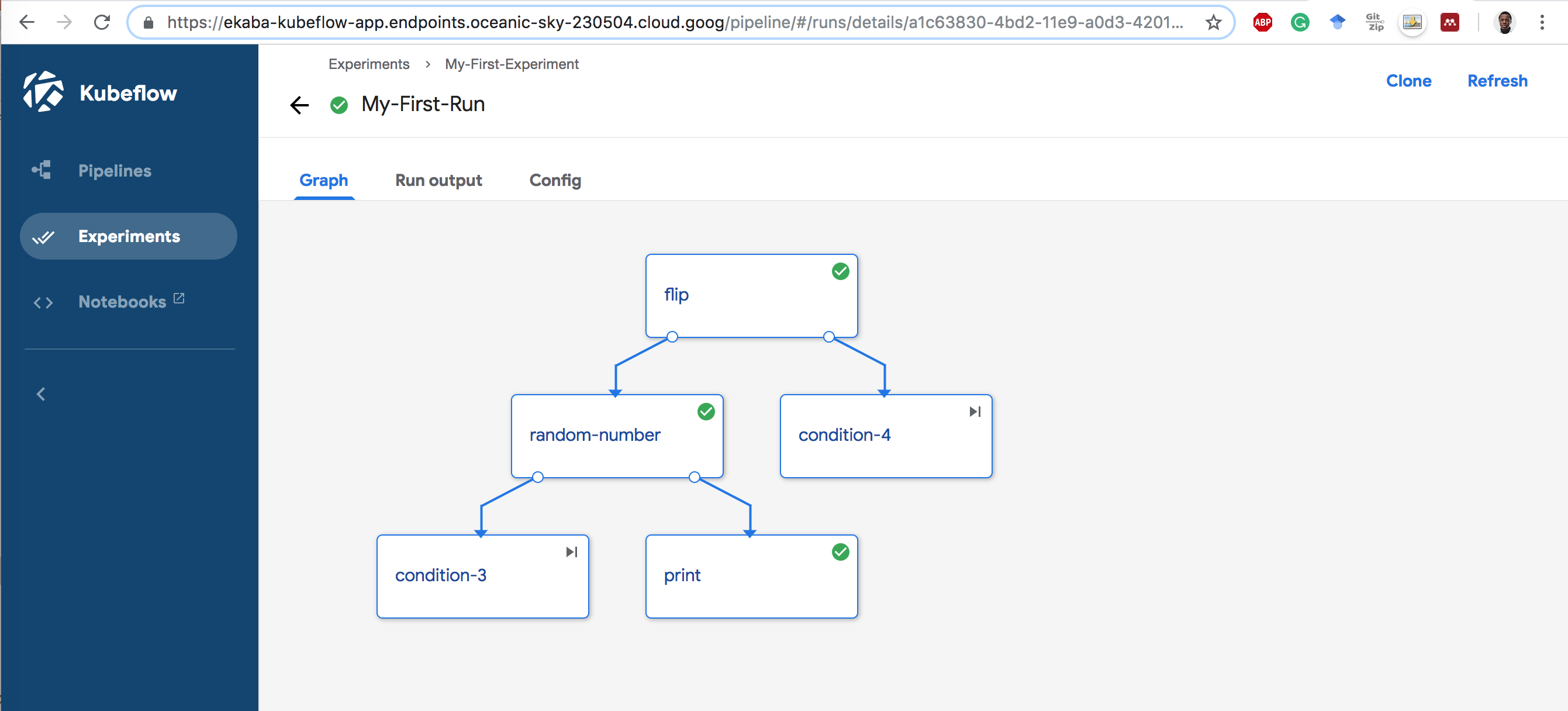Kubeflow Pipelines - Kubeflow for Poets
Kubeflow Pipelines is a simple platform for building and deploying containerized machine learning workflows on Kubernetes. Kubeflow pipelines make it easy to implement production grade machine learning pipelines without bothering on the low-level details of managing a Kubernetes cluster.
Kubeflow Pipelines is a core component of Kubeflow and is also deployed when Kubeflow is deployed.

Components of Kubeflow Pipelines
A Pipeline describes a Machine Learning workflow, where each component of the pipeline is a self-contained set of codes that are packaged as Docker images. Each pipeline can be uploaded individually and shared on the Kubeflow Pipelines User Interface (UI). A pipeline takes inputs (parameters) required to run the pipeline and the inputs and outputs of each component.
The Kubeflow Pipelines platform consists of:
- A user interface (UI) for managing and tracking experiments, jobs, and runs.
- An engine for scheduling multi-step ML workflows.
- An SDK for defining and manipulating pipelines and components.
- Notebooks for interacting with the system using the SDK. (Taken from: Overview of Kubeflow Pipelines)
Executing a Sample Pipeline
1 Click on the name [Sample] Basic - Condition.

2 Click Start an experiment.

3 Give the Experiment a Name.

4 Give the Run Name.

5 Click on the Run Name to start the Run.

Delete Resources
See the end of Deploying an End-to-End Machine Learning Solution on Kubeflow Pipelines to delete billable GCP resources.